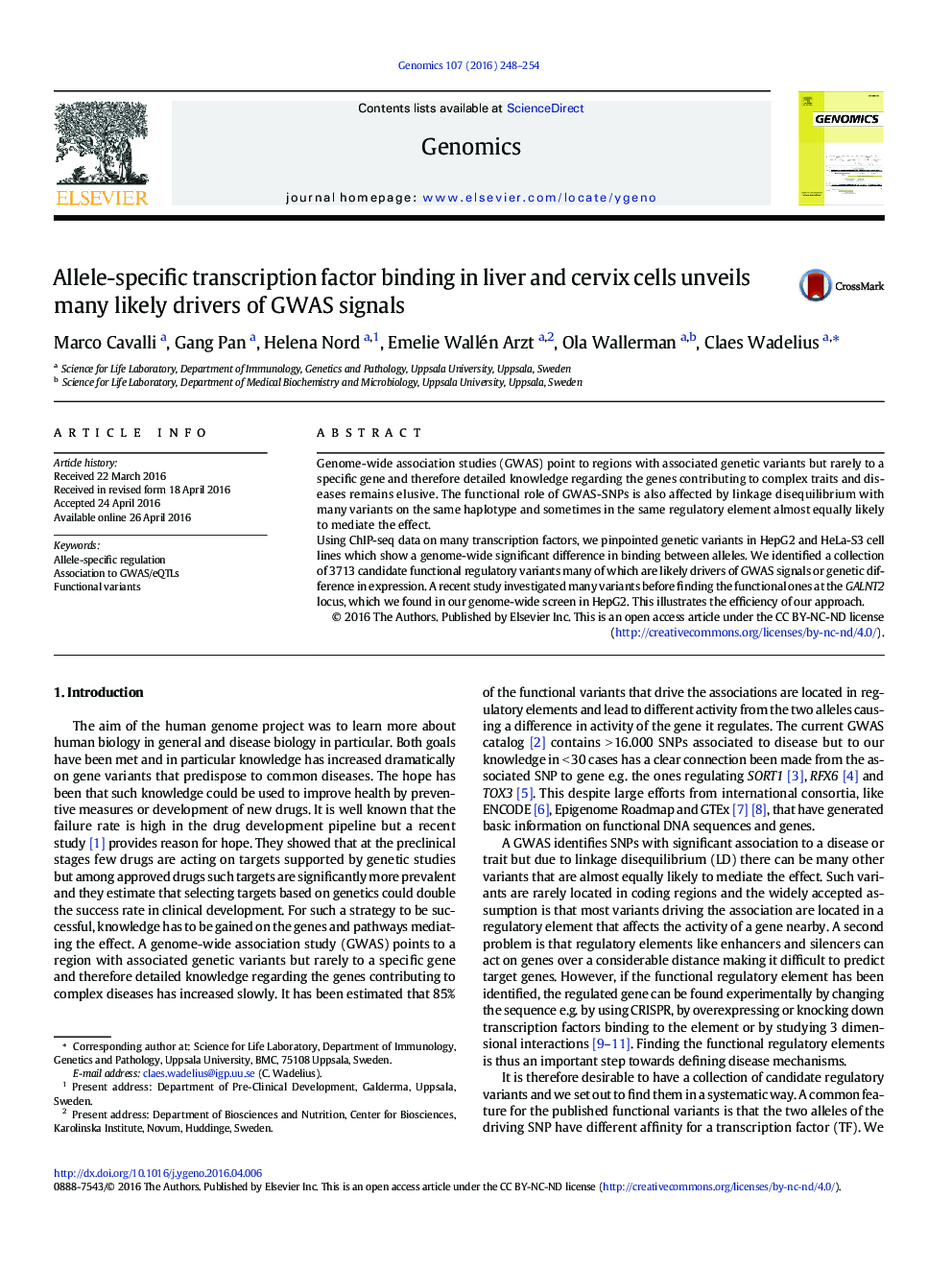| Article ID | Journal | Published Year | Pages | File Type |
|---|---|---|---|---|
| 5907728 | Genomics | 2016 | 7 Pages |
â¢Use of ChIP-seq data to pinpoint non-coding functional regulatory elements.â¢Collections of putative regulatory variants in HepG2 and HeLa-S3 based on allele-specific TF binding (AS-SNPs).â¢AS-SNPs are likely drivers of the associations observed in GWAS/eQTLs analyses.
Genome-wide association studies (GWAS) point to regions with associated genetic variants but rarely to a specific gene and therefore detailed knowledge regarding the genes contributing to complex traits and diseases remains elusive. The functional role of GWAS-SNPs is also affected by linkage disequilibrium with many variants on the same haplotype and sometimes in the same regulatory element almost equally likely to mediate the effect.Using ChIP-seq data on many transcription factors, we pinpointed genetic variants in HepG2 and HeLa-S3 cell lines which show a genome-wide significant difference in binding between alleles. We identified a collection of 3713 candidate functional regulatory variants many of which are likely drivers of GWAS signals or genetic difference in expression. A recent study investigated many variants before finding the functional ones at the GALNT2 locus, which we found in our genome-wide screen in HepG2. This illustrates the efficiency of our approach.
